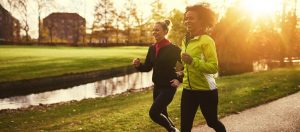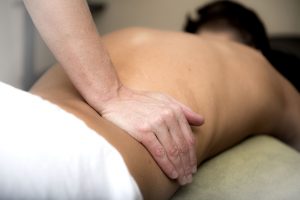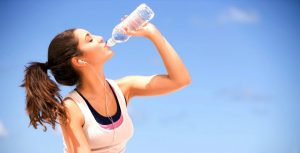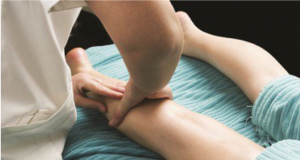No More Back Pain; Easy as 1-2-3
It’s no revelation that the number one complaint we see in our clinic is back pain. Over 85% of us will experience some ‘down time’ with an episode of back pain in our lifetimes. One of the biggest misconceptions is that people believe, perhaps by the previous statistic, that our backs (a.k.a. spines) are brittle. On the contrary, our spines are exceptionally strong and durable structures. The number one recommended remedy for the treatment of back pain is stretching. Makes sense, right? You feel tight? Stretch. Wrong!
The fact of the matter is that research has concluded time and again that our backs need to be more stable and more mobile, not flexible. Typically, when your back is tight, it’s because your brain is telling the surrounding muscles to stabilize or effectively ‘splint’ (think finger splint) the area to prevent further damage. Stretching tissues that are tight will only increase your brains neurological response to tighten. Research has also concluded that flexibility does not equate to less chances for injury. Stability and mobility (of the back) are keys to a healthy spine. Further, understanding that your back is not as vulnerable as you may believe will be your salvation.
Dr. Stuart McGill is a professor at the University of Waterloo and a world renown lecturer and
expert in spine function and injury prevention and rehabilitation. He is constantly challenging the science and forging paths towards literate back health. Among his many achievements in science, he has created what are known commonly as “McGill’s Big Three”. These are 3 exercises he recommends to improve our backs mobility and stability. Granted no regimen of exercise should be cookie cutter, so individual applications will vary. If you feel that you can benefit from these but are concerned about your current back status, consult your physician and talk to him/her about these recommendations by Dr. McGill (side note: if he/she is unaware of Dr. McGill’s work, find another doctor).
Below are the exercises referred to as “McGill’s Big Three”, but there are technically 4 exercises. The first of which is done to determine what your “neutral spine” position is. McGill recommends doing these on a daily basis, just as you would spend time flossing and brushing. If that seems daunting, then you’ve never had back pain. If it seems reasonable, then here’s to never going through it again.
(The following are excerpts taken from Enhancing Low Back Health through stabilization exercise Stuart M. McGill, Professor;Spine Biomechanics, University of Waterloo)
Cat-Camel:
We recommend that the routine begin with the cat-camel motion exercise (spine flexion/extension cycles) to reduce spine viscosity (internal resistance and friction) and “floss” the nerve roots as they outlet at each lumbar level, followed by hip and knee mobility exercises. Note that the cat-camel is intended as a motion exercise – not a stretch, so the emphasis is on motion rather than “pushing” at the end ranges of flexion and extension. We have found that 5-8 cycles is often sufficient to reduce most viscous-frictional stresses.
Curl-up:
The cat-camel motion exercise is followed by anterior abdominal exercises, in this case
the curl-up. The hands are placed under the lumbar spine to preserve a neutral spine posture. Do not flatten the back to the floor. Flattening the back flexes the lumbar spine, violates the neutral spine principle, and increases the loads on the disc and ligaments. One knee is flexed but the other leg is straight to lock the pelvis-lumbar spine and minimize the loss of a neutral lumbar posture. Alternate the bent leg (right to left) midway through the repetitions.
The curl-up is performed by raising the head and the upper shoulders off the floor. The motion
takes place in the thoracic spine – not the lumbar or cervical region. To begin, the hands are
placed under the lumbar region to support a neutral curvature. The exercise is made more
challenging by raising the elbows off the floor. Even more challenging is first performing an
abdominal brace (activating the abdominal muscles), and then curling up against the brace. Hold the posture for 7-8 seconds. Do not hold the breath but breath deeply. Do not increase the challenge by increasing the intensity of the abdominal brace. This will groove desirable motor patterns. Choose the most appropriate level of challenge.
Side Bridge:
Lateral and abdominal muscles (called quadratus lumborum, and the abdominal
obliques) are important for optimal stability, and are targeted with the side bridge exercise. The
beginners level of this exercise involves bridging the torso between the elbow and the knees.
Once this is mastered, and tolerated, the challenge is increased by bridging using the elbow and
the feet. Advanced variations involve placing the upper leg-foot in front of the lower leg-foot to
facilitate longitudinal “rolling” of the torso to challenge both anterior and posterior
portions of the wall, and further groove stabilizing patterns which are transferable to upright tasks.
These are superior exercises in terms of muscle activation, low spine load, and stabilizing
patterns compared to exercises such as performing a sit-up with a twist, for example, that
produce lower muscle activity levels and higher tissue loads.
The beginners side bridge is performed with support from the elbow and knees, while the more advanced variation uses the elbow and feet. Maintain the abdominal brace, a neutral spine and breath deeply.
An advanced level side bridge involves holding the posture on one side for 7-8 seconds and the “rolling”over to the other, and repeating as endurance is increased. It is critical to lock the pelvis to the rib cage, via an abdominal brace, so that the spine remains rigid during the rolling. Finally, add deep breathing while in this posture. The rolling action with the breathing will prepare many people to meet any challenge with a stable spine.
Birddog:
The extensor program consists of leg extensions and the “birddog”. In general, we
recommend that these isometric holds be held no longer than 7-8 seconds. The evidence
supports building endurance with increased repetitions rather than holding time.
The back extensors (both the lumbar and thoracic are important) are challenged with the birddog. But only one half of these muscles are challenged at a time by lifting the alternate arm and leg. This reduces the spine load to about a half of that produced during traditional spine extension exercises such as roman chair extensions. Begin on the hands and knees and hold the posture for 7-8 seconds. Then lower the hand and knee, and “sweep” the floor with them and raise them again for the next repetition. This motion will enhance the stabilizing patterns. Switch sides as appropriate. The abdominal muscle are braced throughout.
To see these exercises in actions, please check out the following video.
Ready to #feelbetter?
You're just a click away from a wicked good massage!
-

60 Minute Massage Gift Card
$170.00 Add to cart -

90 Minute Massage Gift Card
$255.00 Add to cart -

Mini Aer Small Room Air Purifier
$149.00 Add to cart -
Sale!

Thera-Pearl Sports Pack/Hot Cold
Original price was: $14.99.$12.99Current price is: $12.99. Add to cart -

3 Somadome Sessions Gift Card
$135.00 Add to cart -

20 Minute Somadome Gift Card
$45.00 Add to cart -
Sale!

TheraBand® Stretch Strap
Original price was: $19.99.$14.99Current price is: $14.99. Add to cart -

TheraBand CLX Connective Loop
$14.99 Select options
Energy Boosters
Energy Boosters Ways to Get You Through the Day No amount of coaxing, pleading, or pedal pumping could get the engine in the rental car to turn over. It was going nowhere. The travelers had filled the car with unleaded fuel, but it had a diesel engine. It had been able to run a little…
Read MoreWhat is Qi?
What is Qi? A fundamental concept of traditional Chinese medicine (TCM) dating back over 3,000 years, qi (pronounced “chee”) is the Chinese word for energy, which also carries with it connotations of “air,” “breath,” and “life force.” In TCM, it is understood that everything from humans and animals to rocks and trees is filled with…
Read MoreWhy Buy Organic?
Why Buy Organic? Is the Higher Price Worth It? While shopping in your grocery store’s produce section, you may notice the organically grown apples are pocked and not as big and perfectly round as the conventional produce, but they are more expensive. What’s the difference, and which do you choose? Your decision may significantly impact…
Read MoreAre You Making the Most of Your Massage?
Are You Making the Most of Your Massage? How to Prolong the Benefits of Bodywork A massage works in wonderful ways, easing stress and pain, calming the nervous system, increasing circulation, loosening tight muscles, stimulating internal organs, and enhancing skin. The multiplicity of physiological responses sends a simple, clear message to the mind: Massage feels…
Read MoreThe Case for Chocolate
The Case for Chocolate New Studies Show Health Benefits It’s not like we need a specific reason to eat chocolate, but it doesn’t hurt that studies are finding increasing health benefits associated with the popular indulgence. While chocolate is high in sugar and saturated fat, it does contain chemical compounds with proven benefits, so enjoy–in…
Read MoreThe Wonders of Water
The Wonders of Water For Skin Health and More Shelley Burns, N.D. Creams, nutritional supplements, treatments, lotions, and potions. We are always looking for the next miracle product to keep skin looking healthy and young. However, there is one essential, inexpensive, and often overlooked nutrient right at your fingertips:water. Just as a car cannot function…
Read MoreInvest In Your Health
Invest in Your Health Massage Offers Excellent Return onInvestment “Invest for the long term” is great financial advice, but it’s also great healthcare advice. Never is investing for the long term more important than when you are making day-to-day decisions about your health. There are short-term gains from taking care of your health, to be…
Read MoreLife Hack: Iced Cubes
Life Hack: Coffee Cubes (Redux) As usual in New England, we have gone from Winter to Summer, with Spring being an absentee season (again). Since it feels like Summer is already here, I thought it best to give you a Life Hack that is an oldy, but a goody! Iced Coffee…..CUBES! #mindblown Yes. I have offered this…
Read MoreMake a Great Save to Avoid Back Pain
Make a Great Save to Avoid Back Pain 7- Stretches in 7-Minutes I was speaking the other day with one of our therapists and we were discussing our role in helping our patients. I was explaining that a comment I often tell new patients is; “These are hands, not magic wands”. Patients often seek out…
Read MoreTime for Sleep
Time for Sleep As a nation, we may be divided, but there is one common bond that unites us all around the world; sleep. We all need sleep in order to be capable of performing every day tasks. Sleep is an imperative part of the human experience. Without a good night’s sleep, our bodies will slowly…
Read More









